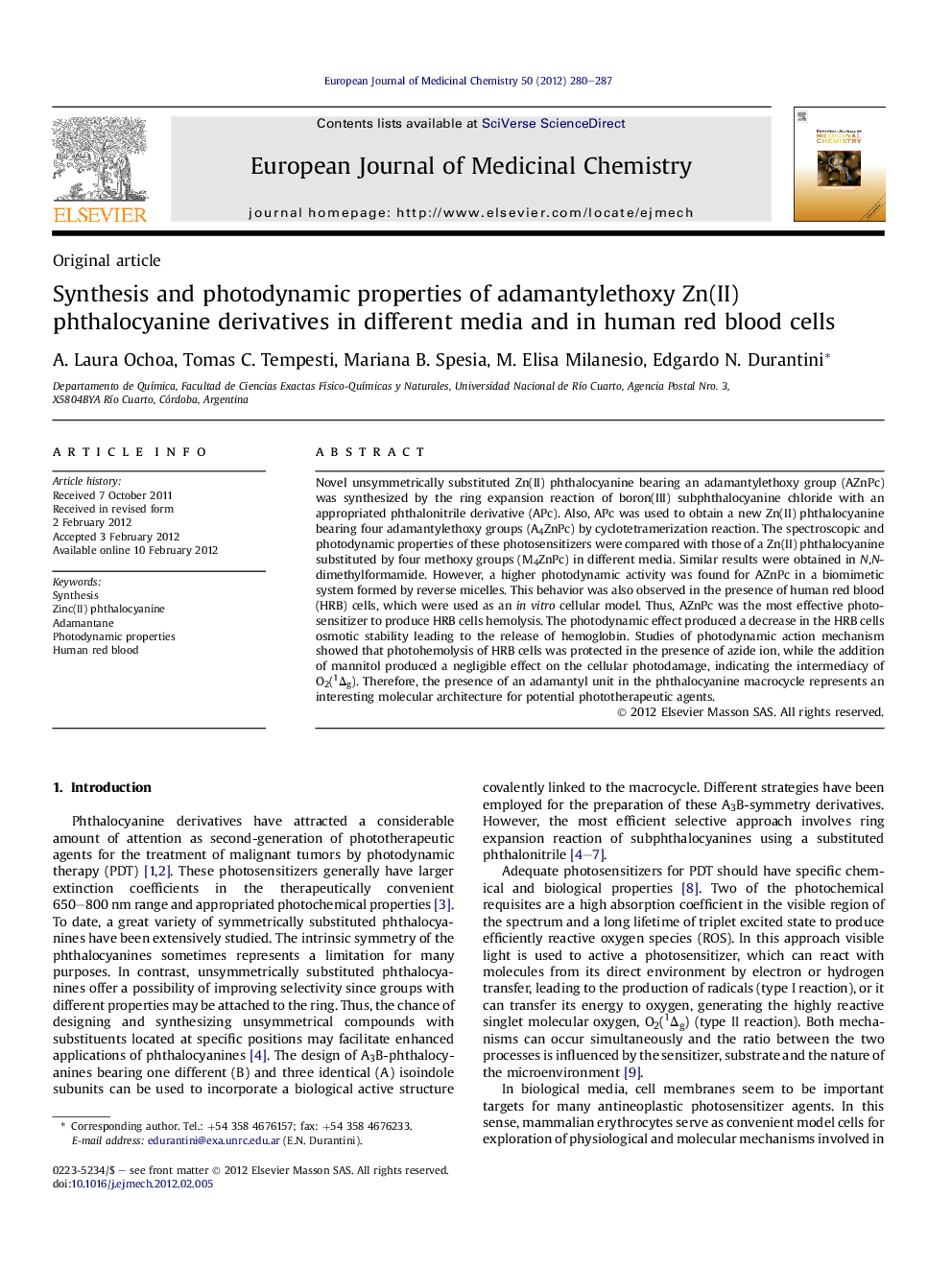| Article ID | Journal | Published Year | Pages | File Type |
|---|---|---|---|---|
| 1394517 | European Journal of Medicinal Chemistry | 2012 | 8 Pages |
Novel unsymmetrically substituted Zn(II) phthalocyanine bearing an adamantylethoxy group (AZnPc) was synthesized by the ring expansion reaction of boron(III) subphthalocyanine chloride with an appropriated phthalonitrile derivative (APc). Also, APc was used to obtain a new Zn(II) phthalocyanine bearing four adamantylethoxy groups (A4ZnPc) by cyclotetramerization reaction. The spectroscopic and photodynamic properties of these photosensitizers were compared with those of a Zn(II) phthalocyanine substituted by four methoxy groups (M4ZnPc) in different media. Similar results were obtained in N,N-dimethylformamide. However, a higher photodynamic activity was found for AZnPc in a biomimetic system formed by reverse micelles. This behavior was also observed in the presence of human red blood (HRB) cells, which were used as an in vitro cellular model. Thus, AZnPc was the most effective photosensitizer to produce HRB cells hemolysis. The photodynamic effect produced a decrease in the HRB cells osmotic stability leading to the release of hemoglobin. Studies of photodynamic action mechanism showed that photohemolysis of HRB cells was protected in the presence of azide ion, while the addition of mannitol produced a negligible effect on the cellular photodamage, indicating the intermediacy of O2(1Δg). Therefore, the presence of an adamantyl unit in the phthalocyanine macrocycle represents an interesting molecular architecture for potential phototherapeutic agents.
Graphical abstractThe paper reports the synthesis and photodynamic activity of novel adamantylethoxy Zn(II)phthalocyanine derivatives in different media and in human red blood cells.Figure optionsDownload full-size imageDownload as PowerPoint slideHighlights► New adamantylethoxy Zn(II)phthalocyanine derivatives were synthesized. ► Spectroscopic and photodynamic properties were examined in different media and in human red blood cells. ► A higher photohemolytic activity was found for the phthalocyanine bearing an adamantyl unit. ► Photohemolysis was mainly produced by the intermediacy of singlet molecular oxygen.
